Performance Comparison between Mini-LED Backlit LCD and OLED Display for 15.6-Inch Notebook Computers
Abstract
:1. Introduction
2. Performance Metrics
2.1. Luminance and Gamma Curve
2.2. Color Gamut and Color Shift
2.3. Power Consumption
2.4. Ambient Contrast Ratio
3. Halo Effect
4. Conclusions
Author Contributions
Funding
Institutional Review Board Statement
Informed Consent Statement
Data Availability Statement
Acknowledgments
Conflicts of Interest
References
- Hsiang, E.L.; Yang, Z.; Yang, Q.; Lan, Y.F.; Wu, S.T. Prospects and challenges of mini-LED, OLED, and micro-LED displays. J. Soc. Inf. Disp. 2021, 29, 446–465. [Google Scholar] [CrossRef]
- Liu, W.; Mu, L.; Xu, A.; Zhang, Y.; Qiao, M. 17-6: Invited Paper: 4K HDR “Stacked-Panel” TV Based on Dual-Cell LCD. SID Symp. Dig. Tech. Pap. 2020, 51, 243–245. [Google Scholar] [CrossRef]
- Zheng, B.; Deng, Z.; Zheng, J.; Wu, L.; Yang, W.; Lin, Z.; Wang, H.; Shen, P.; Li, J. 41-2: Invited Paper: An Advanced High-Dynamic-Range LCD for Smartphones. SID Symp. Dig. Tech. Pap. 2019, 50, 566–568. [Google Scholar] [CrossRef]
- Xiong, J.; Hsiang, E.L.; He, Z.; Zhan, T.; Wu, S.T. Augmented reality and virtual reality displays: Emerging technologies and future perspectives. Light Sci. Appl. 2021, 10, 216. [Google Scholar] [CrossRef] [PubMed]
- Hsiang, E.L.; Yang, Z.; Zhan, T.; Zou, J.; Akimoto, H.; Wu, S.T. Optimizing the display performance for virtual reality systems. OSA Continuum. 2021, 4, 3052–3067. [Google Scholar] [CrossRef]
- Xu, M.; Hua, H. High dynamic range head mounted display based on dual-layer spatial modulation. Opt. Express 2017, 25, 23320–23333. [Google Scholar] [CrossRef] [Green Version]
- Li, Y.; Zhan, T.; Yang, Z.; Xu, C.; LiKamWa, P.L.; Li, K.; Wu, S.T. Broadband cholesteric liquid crystal lens for chromatic aberration correction in catadioptric virtual reality optics. Opt. Express 2021, 29, 6011–6020. [Google Scholar] [CrossRef]
- Zhan, T.; Zou, J.; Xiong, J.; Liu, X.; Chen, H.; Yang, J.; Liu, S.; Dong, Y.; Wu, S.T. Practical chromatic aberration correction in virtual reality displays enabled by large-size ultra-broadband liquid crystal polymer lenses. Adv. Opt. Mater. 2020, 8, 1901360. [Google Scholar] [CrossRef]
- Chen, H.W.; Lee, J.H.; Lin, B.Y.; Chen, S.; Wu, S.T. Liquid crystal display and organic light-emitting diode display: Present status and future perspectives. Light Sci. Appl. 2018, 7, 17168. [Google Scholar] [CrossRef]
- Joo, W.J.; Kyoung, J.; Esfandyarpour, M.; Lee, S.H.; Koo, H.; Song, S.; Brongersma, M.L. Metasurface-driven OLED displays beyond 10,000 pixels per inch. Science 2020, 370, 459–463. [Google Scholar] [CrossRef]
- Lin, J.Y.; Jiang, H.X. Development of microLED. Appl. Phys. Lett. 2020, 116, 100502. [Google Scholar] [CrossRef]
- Wong, M.S.; Nakamura, S.; DenBaars, S.P. Review—progress in high performance III-nitride micro-light-emitting diodes. ECS J. Solid State Sci. Technol. 2020, 9, 015012. [Google Scholar] [CrossRef]
- Huang, Y.; Hsiang, E.L.; Deng, M.Y.; Wu, S.T. Mini-LED, Micro-LED and OLED displays: Present status and future perspectives. Light Sci. Appl. 2020, 9, 105. [Google Scholar] [CrossRef] [PubMed]
- Wu, T.; Sher, C.W.; Lin, Y.; Lee, C.F.; Liang, S.; Lu, Y.; Chen, Z. Mini-LED and micro-LED: Promising candidates for the next generation display technology. Appl. Sci. 2018, 8, 1557. [Google Scholar] [CrossRef] [Green Version]
- Hsiang, E.L.; He, Z.; Yang, Z.; Lan, Y.F.; Wu, S.T. Tailoring the light distribution of micro-LED displays with a compact compound parabolic concentrator and an engineered diffusor. Opt. Express 2021, 29, 39859–39873. [Google Scholar] [CrossRef]
- Wu, Y.; Ma, J.; Su, P.; Zhang, L.; Xia, B. Full-Color Realization of Micro-LED Displays. Nanomaterials 2020, 10, 2482. [Google Scholar] [CrossRef]
- Kim, S.E.; An, J.Y.; Hong, J.J.; Lee, T.W.; Kim, C.G.; Song, W.J. How to reduce light leakage and clipping in local-dimming liquid-crystal displays. J. Soc. Inf. Disp. 2009, 17, 1051–1057. [Google Scholar] [CrossRef] [Green Version]
- Lin, F.C.; Huang, Y.P.; Liao, L.Y.; Liao, C.Y.; Shieh, H.P.; Wang, T.M.; Yeh, S.C. Dynamic backlight gamma on high dynamic range LCD TVs. J. Disp. Technol. 2008, 4, 139–146. [Google Scholar]
- Zhang, X.B.; Wang, R.; Dong, D.; Han, J.H.; Wu, H.X. Dynamic backlight adaptation based on the details of image for liquid crystal displays. J. Disp. Technol. 2012, 8, 108–111. [Google Scholar] [CrossRef]
- Tan, G.; Huang, Y.; Chen, M.C.; Lee, S.L.; Wu, S.T. High dynamic range liquid crystal displays with a mini-LED backlight. Opt. Express 2018, 26, 16572–16584. [Google Scholar] [CrossRef] [Green Version]
- Akimoto, H.; Yamamoto, A.; Washio, H.; Nakano, T. 46-3: Invited Paper: Design and Process of 2D Backlight Beyond HDR 5000 Nits. SID Symp. Dig. Tech. Pap. 2021, 52, 628–631. [Google Scholar] [CrossRef]
- Féry, C.; Racine, B.; Vaufrey, D.; Doyeux, H.; Cinà, S. Physical mechanism responsible for the stretched exponential decay behavior of aging organic light-emitting diodes. Appl. Phys. Lett. 2005, 87, 213502. [Google Scholar] [CrossRef]
- Lee, J.H.; Chen, C.H.; Lee, P.H.; Lin, H.Y.; Leung, M.K.; Chiu, T.L.; Lin, C.F. Blue organic light-emitting diodes: Current status, challenges, and future outlook. J. Mater. Chem. C 2019, 7, 5874–5888. [Google Scholar] [CrossRef]
- Kim, E.; Chung, J.; Lee, J.; Cho, H.; Cho, N.S.; Yoo, S. A systematic approach to reducing angular color shift in cavity-based organic light-emitting diodes. Org. Electron. 2017, 48, 348–356. [Google Scholar] [CrossRef]
- Tan, G.; Lee, J.H.; Lin, S.C.; Zhu, R.; Choi, S.H.; Wu, S.T. Analysis and optimization on the angular color shift of RGB OLED displays. Opt. Express 2017, 25, 33629–33642. [Google Scholar] [CrossRef]
- Lee, S.H.; Lee, S.L.; Kim, H.Y. Electro-optic characteristics and switching principle of a nematic liquid crystal cell controlled by fringe-field switching. Appl. Phys. Lett. 1998, 73, 2881–2883. [Google Scholar] [CrossRef]
- Chen, H.; Tan, G.; Wu, S.T. Ambient contrast ratio of LCDs and OLED displays. Opt. Express 2017, 25, 33643–33656. [Google Scholar] [CrossRef]
- Black Uniformity of TVs. Available online: https://www.rtings.com/tv/tests/picture-quality/black-uniformity-clouding-flashlighting (accessed on 30 November 2021).
- Hsiang, E.L.; Yang, Q.; He, Z.; Zou, J.; Wu, S.T. Halo effect in high-dynamic-range mini-LED backlit LCDs. Opt. Express 2020, 28, 36822–36837. [Google Scholar] [CrossRef]
- Huang, Y.; Tan, G.; Gou, F.; Li, M.C.; Lee, S.L.; Wu, S.T. Prospects and challenges of mini-LED and micro-LED displays. J. Soc. Inf. Disp. 2019, 27, 387–401. [Google Scholar] [CrossRef]

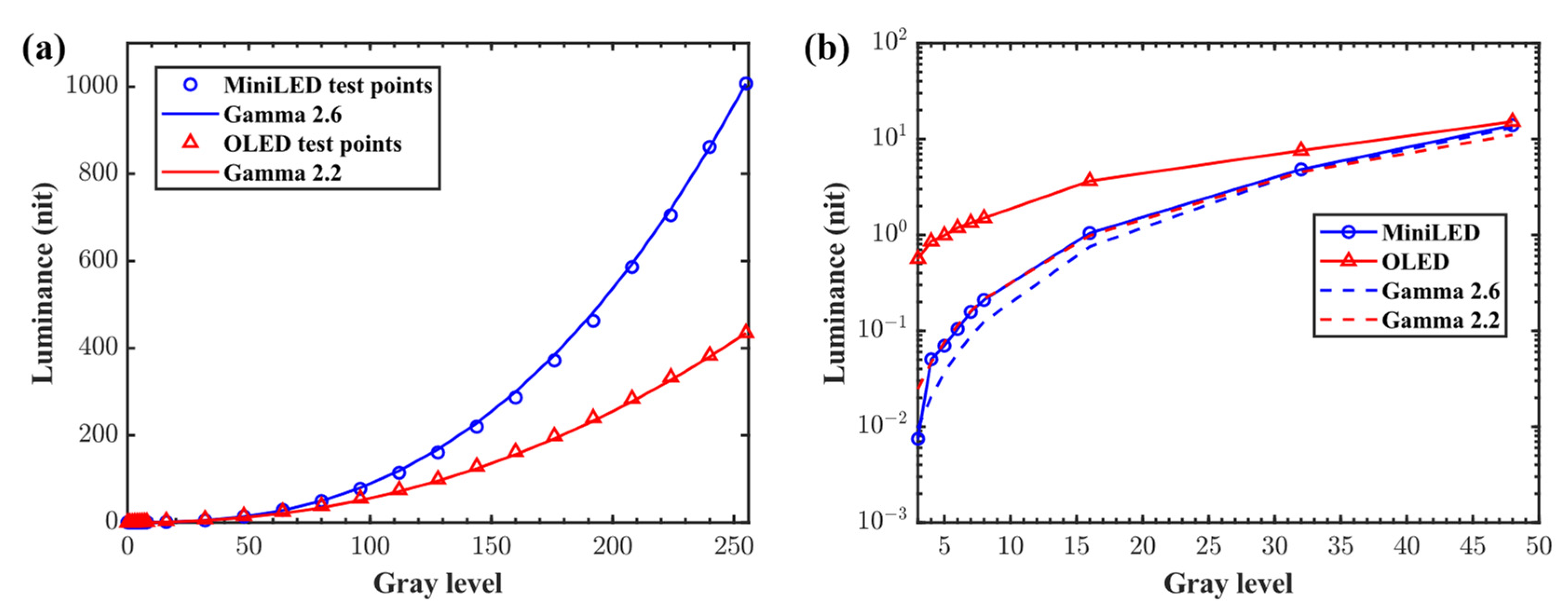
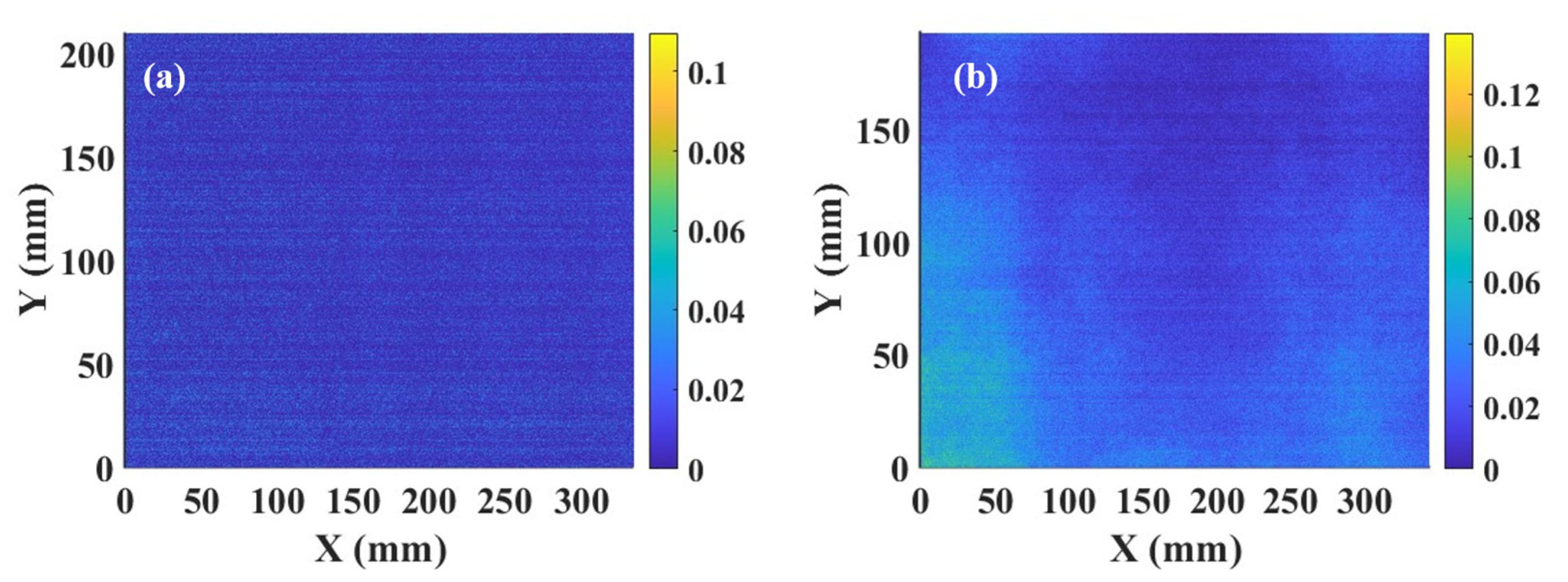
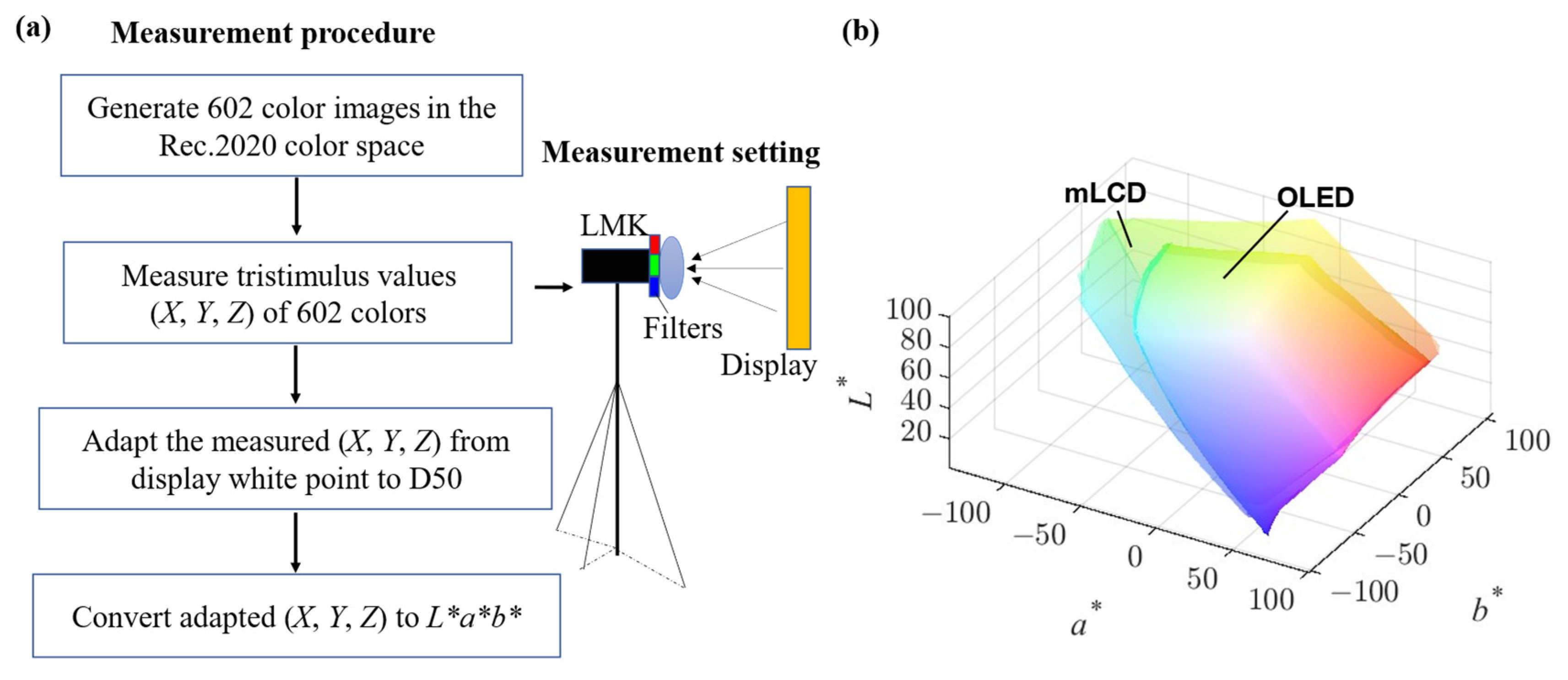




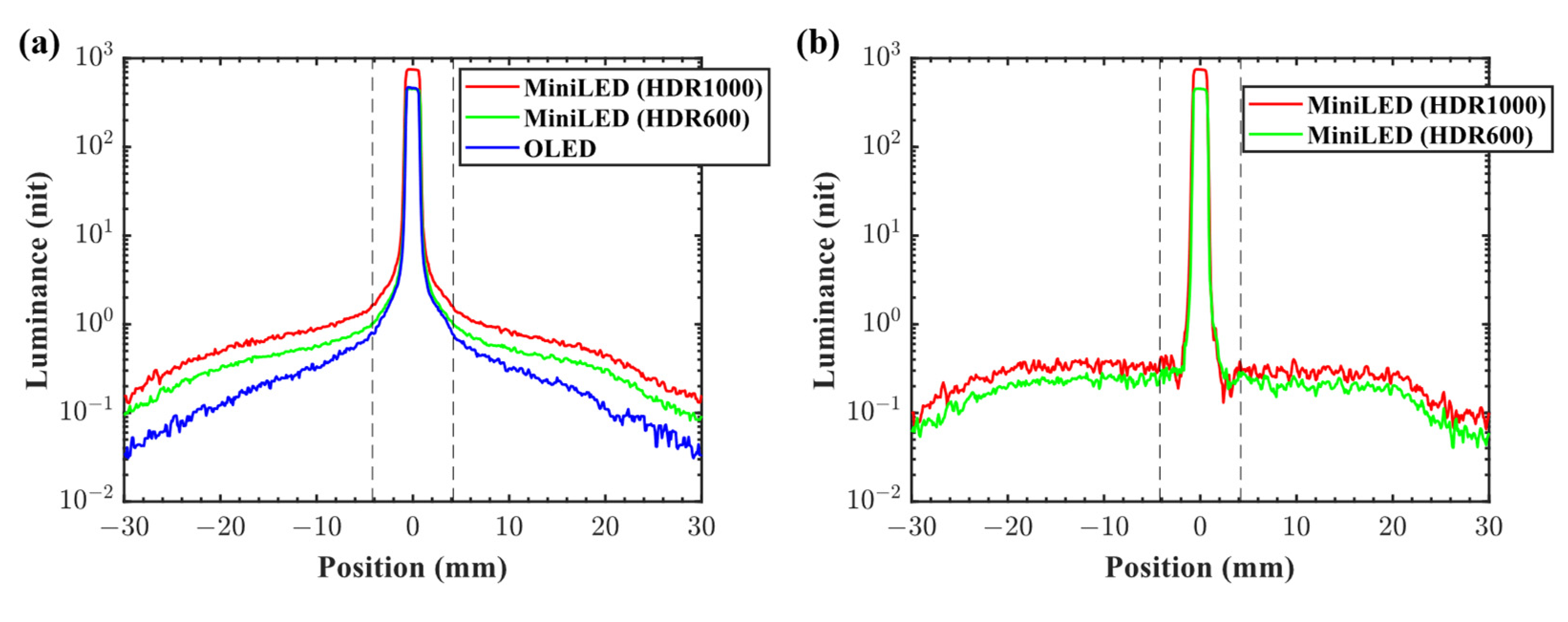
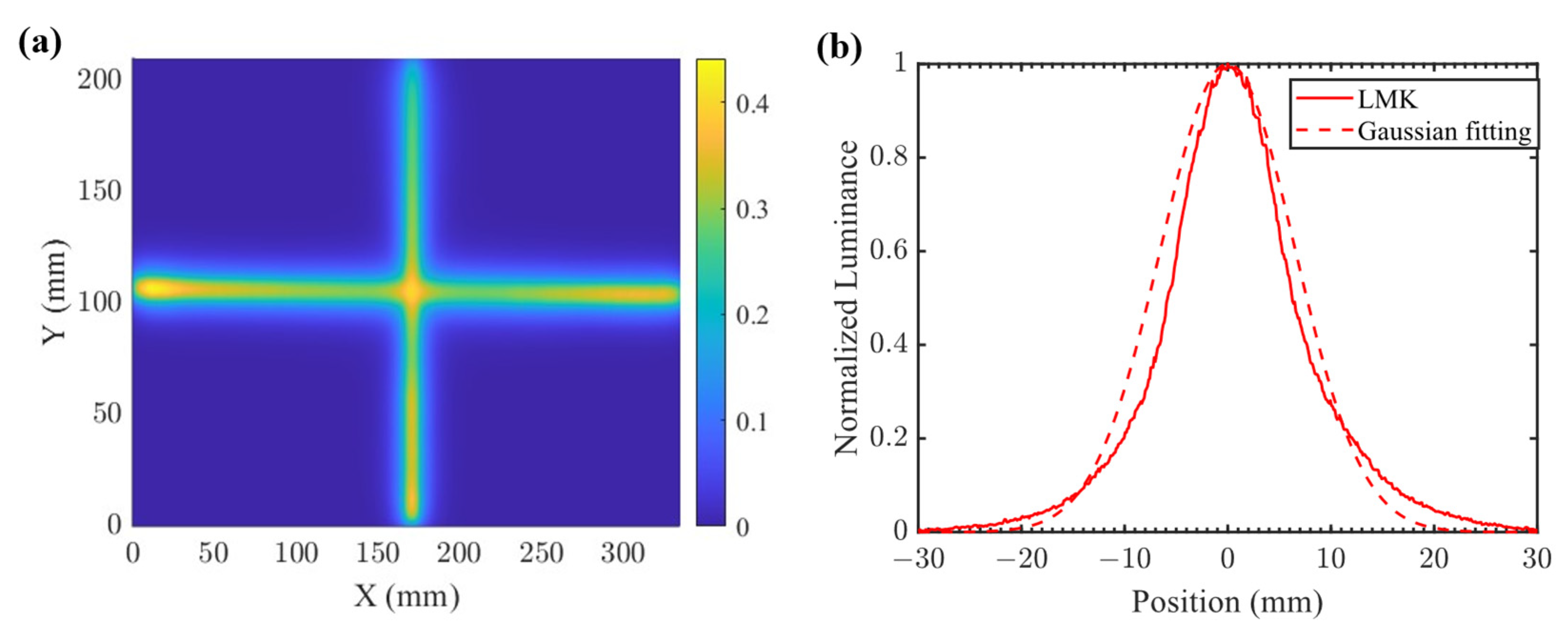
Publisher’s Note: MDPI stays neutral with regard to jurisdictional claims in published maps and institutional affiliations. |
© 2022 by the authors. Licensee MDPI, Basel, Switzerland. This article is an open access article distributed under the terms and conditions of the Creative Commons Attribution (CC BY) license (https://creativecommons.org/licenses/by/4.0/).
Share and Cite
Yang, Z.; Hsiang, E.-L.; Qian, Y.; Wu, S.-T. Performance Comparison between Mini-LED Backlit LCD and OLED Display for 15.6-Inch Notebook Computers. Appl. Sci. 2022, 12, 1239. https://doi.org/10.3390/app12031239
Yang Z, Hsiang E-L, Qian Y, Wu S-T. Performance Comparison between Mini-LED Backlit LCD and OLED Display for 15.6-Inch Notebook Computers. Applied Sciences. 2022; 12(3):1239. https://doi.org/10.3390/app12031239
Chicago/Turabian StyleYang, Zhiyong, En-Lin Hsiang, Yizhou Qian, and Shin-Tson Wu. 2022. "Performance Comparison between Mini-LED Backlit LCD and OLED Display for 15.6-Inch Notebook Computers" Applied Sciences 12, no. 3: 1239. https://doi.org/10.3390/app12031239
APA StyleYang, Z., Hsiang, E.-L., Qian, Y., & Wu, S.-T. (2022). Performance Comparison between Mini-LED Backlit LCD and OLED Display for 15.6-Inch Notebook Computers. Applied Sciences, 12(3), 1239. https://doi.org/10.3390/app12031239






